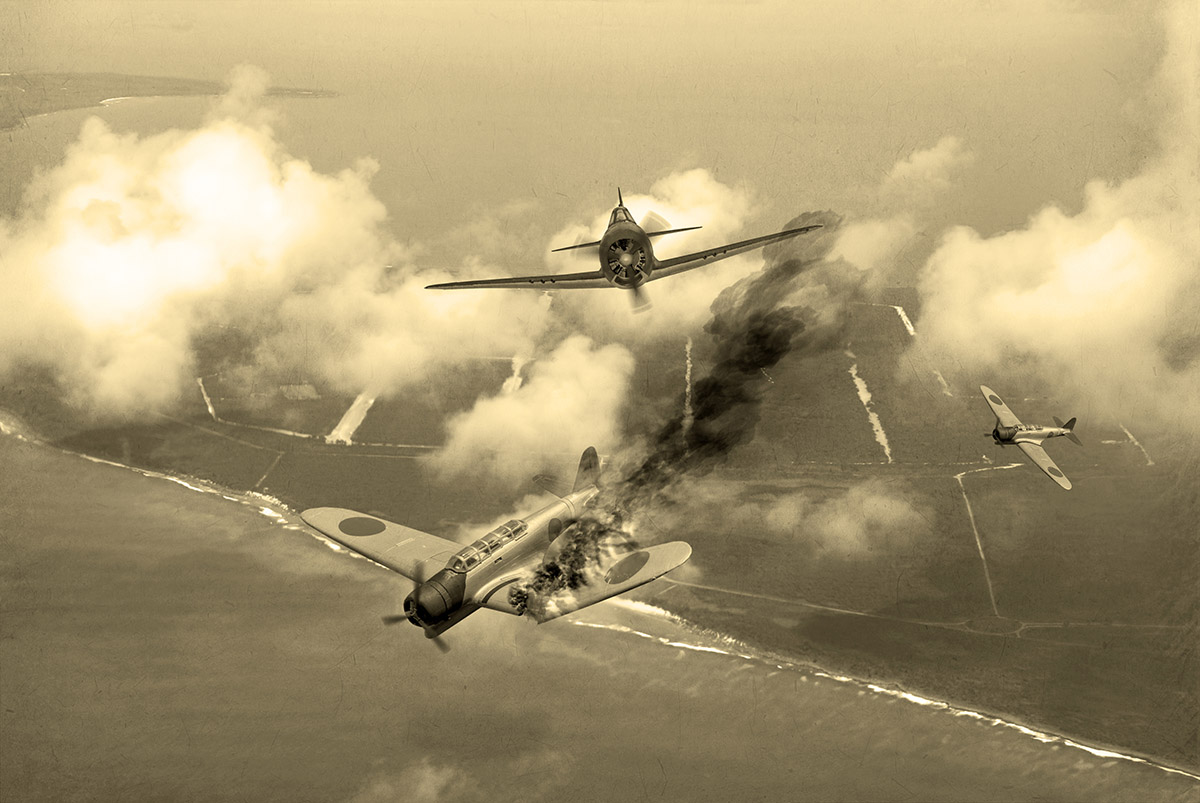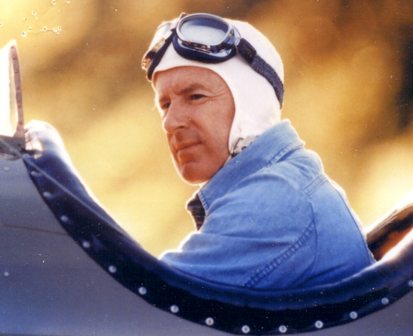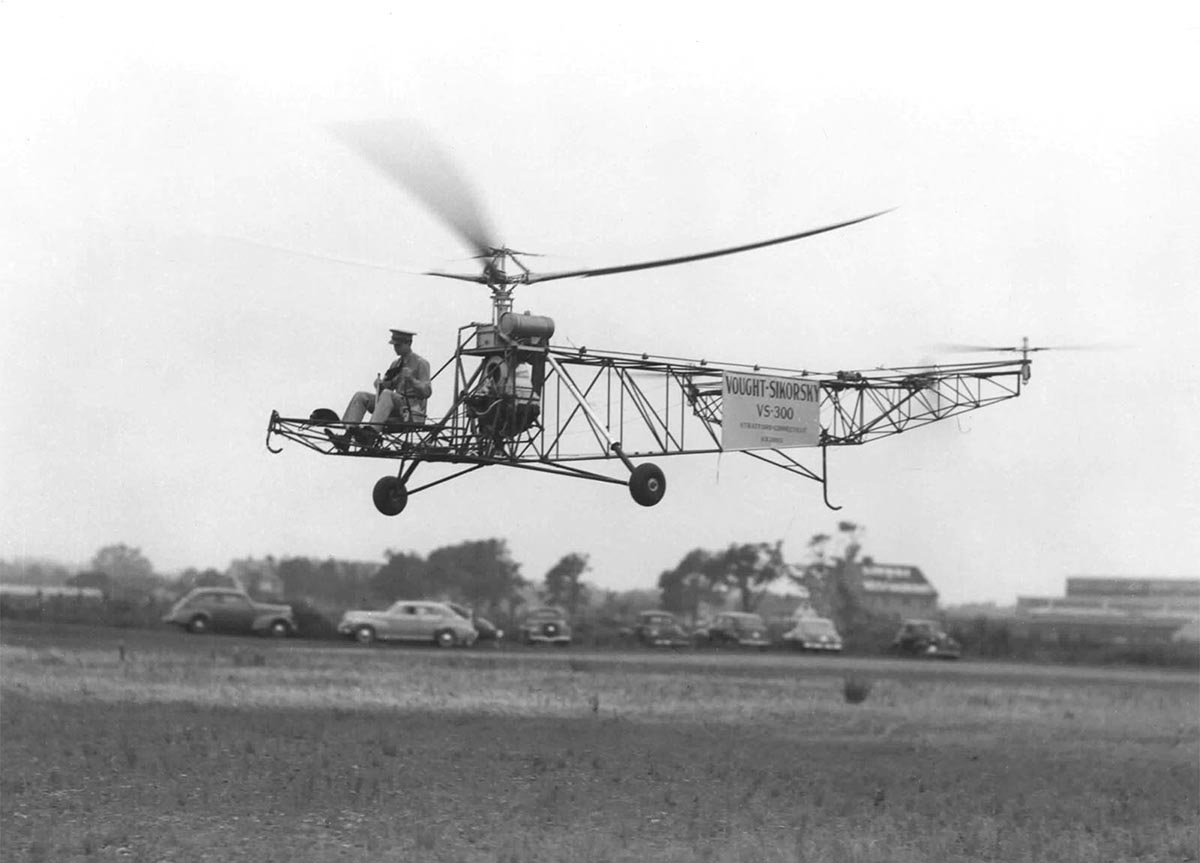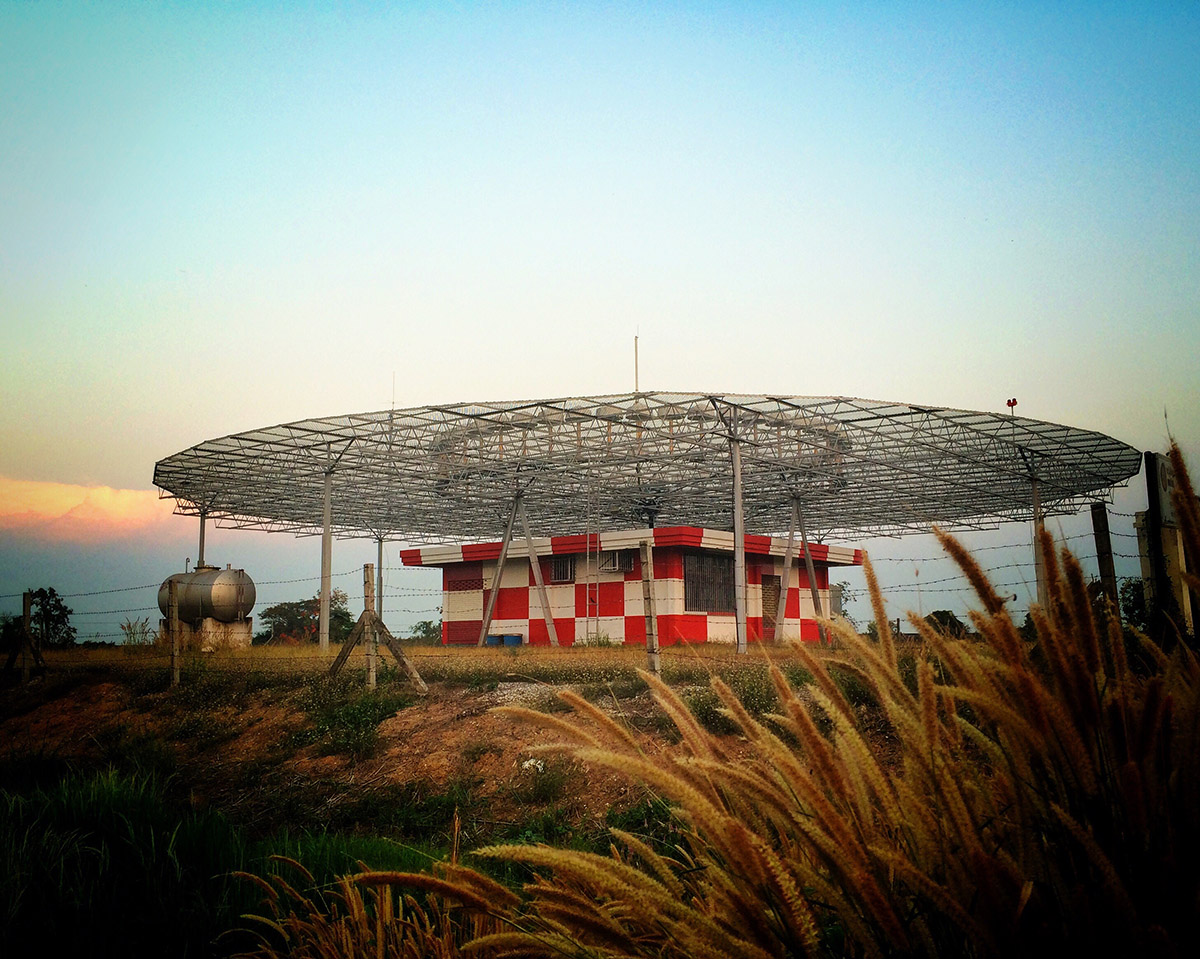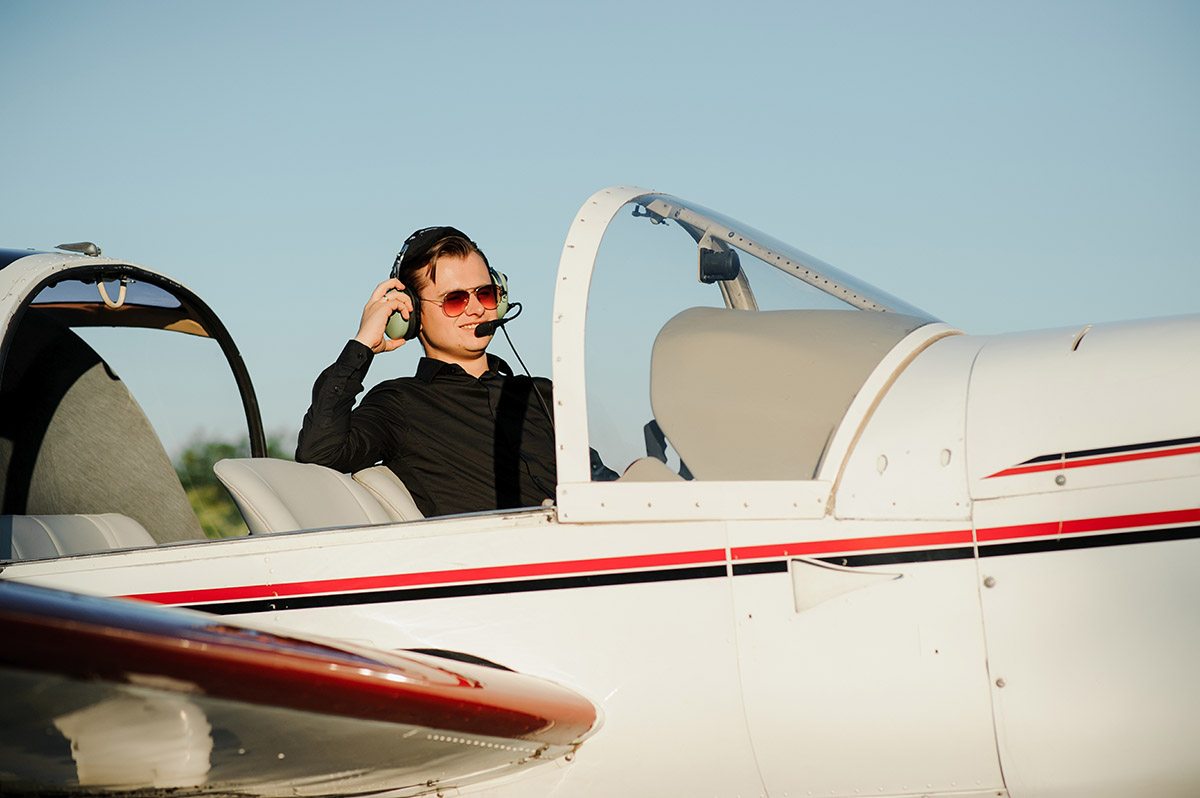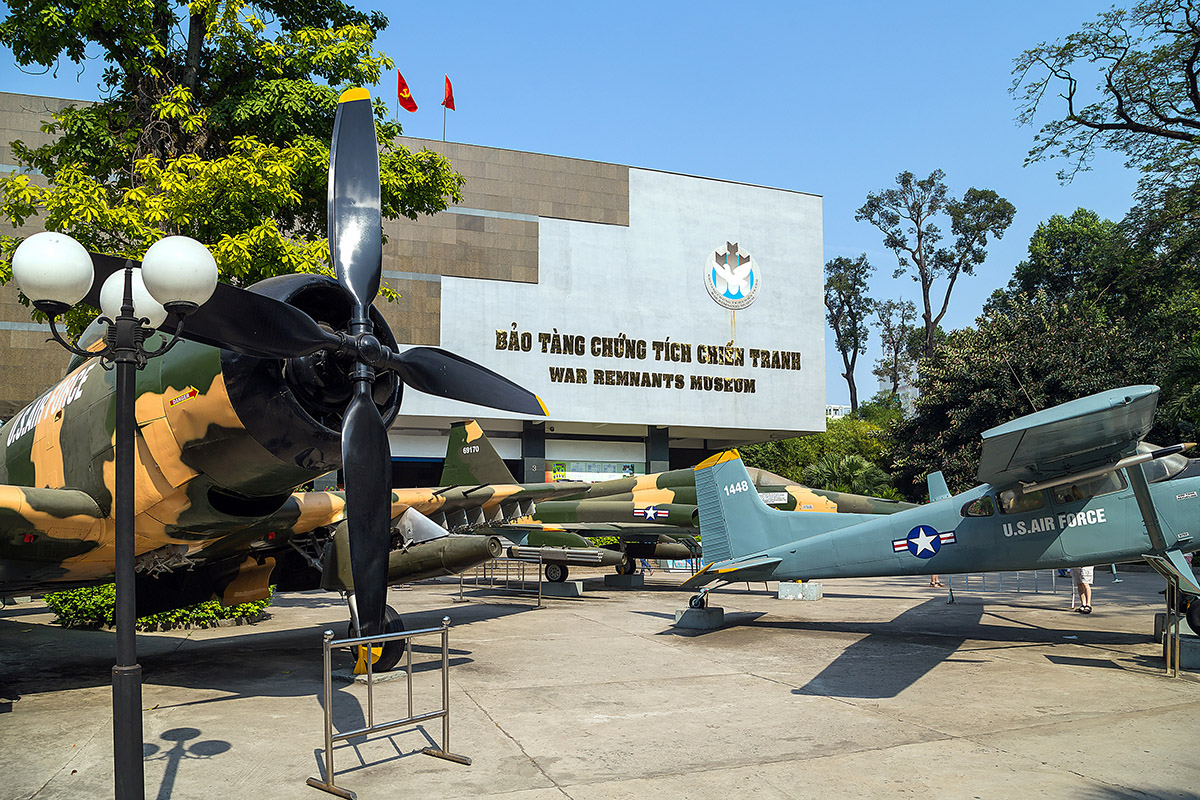You must already know what a plane is; who doesn’t? But have you ever wondered why something so heavy can stay in the air for hours or even the entire day? The answer lies in the inside of a plane. Keep scrolling to find out what’s really in there!
In this article:
The 7 Main Parts Of An Aircraft
The fuselage (the body) provides structural strength. Wings (the arms) create lift and include flaps for aerial control, while the cockpit (the nerve centers) houses flight controls and pilots’ communication tools.
An engine (the heart) provides propulsion, and the tail (spine) includes vertical and horizontal stabilizers for yaw and pitch adjustments. Lastly, the landing gears and wheels act like legs whenever the plane is on the ground.
1. Fuselage
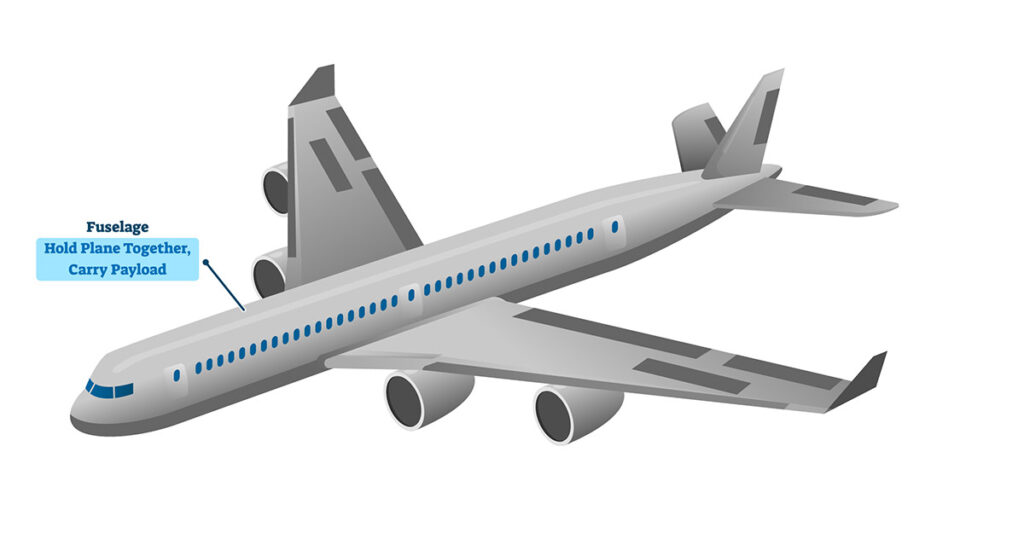
Think of the fuselage as the airplane’s main body. Far beyond just a shell, the fuselage keeps the plane strong, stable, and intact throughout the flight.
How about its tail number, the special ID for every plane? It can be found near the back of the fuselage, next to the plane’s tail (hence the name). This unique marking makes it easier to track individual planes for flight logs and maintenance records, ensuring they meet regulations.
2. Wings
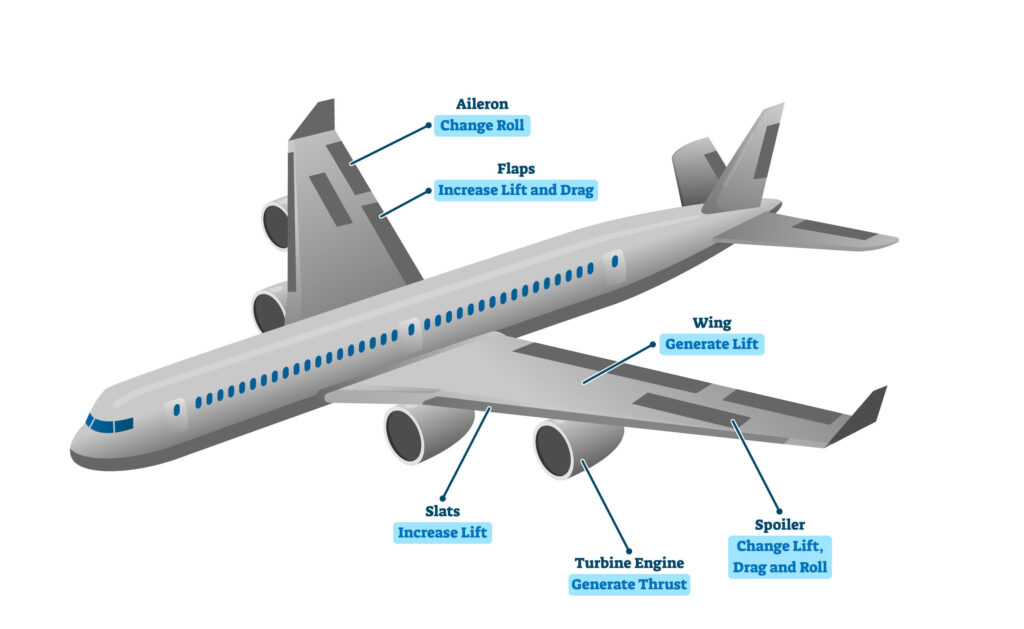
Wings are huge parts of a plane. People call them “wings” since they look quite like bird wings (which serve the same purpose).
Most airplanes are labeled fixed-wing, which sets them apart from helicopters with rotary wings. The key to their flying capability is that the wings can create lift, which further boils down to their forward motion and aerodynamic shape.
Inside the wings, other important components contribute to the plane’s overall performance and control. Let’s break them down:
Ailerons, meaning “little wing” in French, are responsible for the airplane’s bank or roll during flight. These movable parts work in pairs at the wings’ back edge, and pilots often use them to adjust the airplane’s lateral movements with greater precision.
Another crucial feature is the flaps, which help reduce the plane’s stalling speed by changing how the trailing edge is shaped. As a result, the aircraft can easily maintain lift during both landing and takeoff at a lower speed, resulting in safer, more controlled flight phases.
A closer look at the wing’s structure reveals the differences between the trailing and leading edges.
The leading edge is the wing’s front part, and the trailing edge (back edge) comes with the trim tab and aileron. For your information, the “Trim tab” refers to an extra control surface that further fine-tunes the airplane’s control and stability during flight.
3. Cockpit
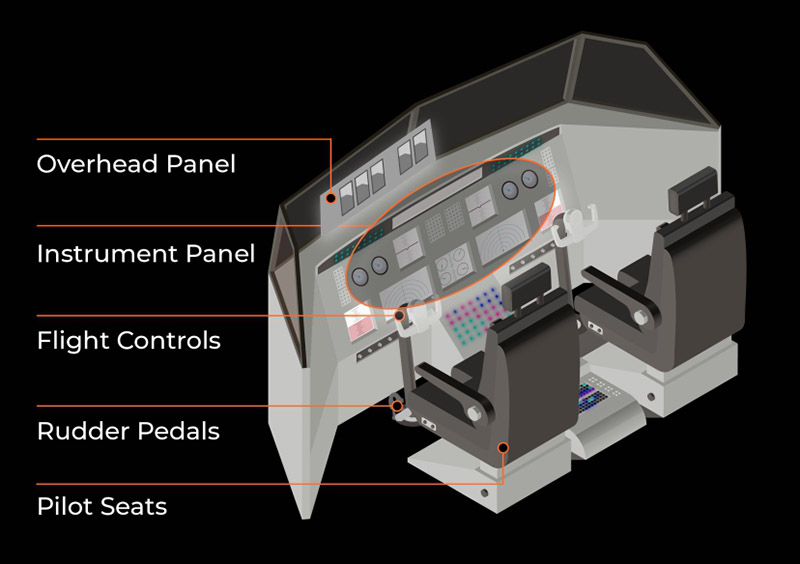
The cockpit acts as the airplane’s nerve center, where the pilot takes command.
What are the main components of an aircraft’s cockpit? It’s packed with all essential gear for the plane crew, including controls, flight instruments, communication tools (audio/radio), and avionics.
Electro flight instruments play the largest role inside the cockpit, especially the MFD (multi-function display), which helps pilots monitor speed, direction, altimeter, and altitude readings.
- The PFD (Primary Flight Display) is an essential component here. It displays vital flight info to pilots, including airspeed, altitude, vertical speed, and direction.
- Then there’s the ND (navigation display), which provides detailed route info (direction, wind speed, waypoints, etc.) to help pilots stay on course.
- Meanwhile, the FMS (flight management system) is the brain behind the operation, storing and managing all important flight plan data to ensure smooth navigation.
- Let’s not forget about the transponder, strategically placed inside the cockpit. It provides real-time updates on the plane’s whereabouts to ATC (Air Traffic Control), contributing to more effective aerial traffic management.
As technology advances, glass cockpits are becoming more common and gradually replacing standard analog gauges and dials. These high-tech displays feature big LCD screens, known as EFIDs (electro flight instrument display), making it easier for pilots to access all the information they need at a glance.
4. Engine
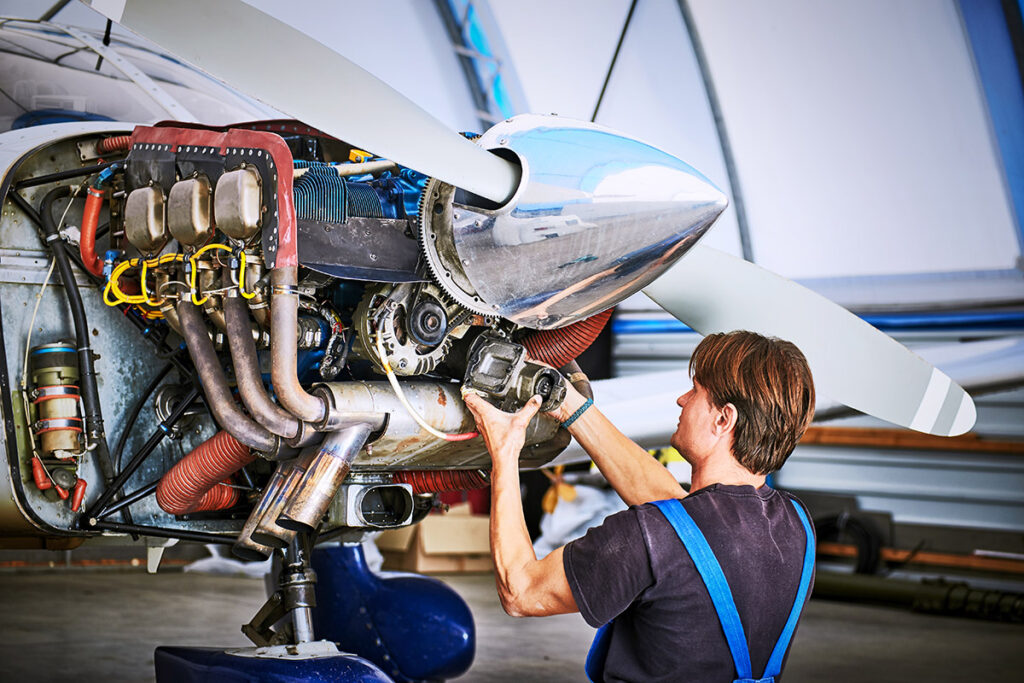
An engine is the plane’s beating heart, driving the whole thing forward. Two main engine types are commonly used in aviation: gas turbines and piston engines.
Companies like Lycoming Engines and Continental Engines are among the most well-known. Their designs cater to different aircraft types, from big commercial planes to smaller private ones, carefully reinforced to be more reliable, perform well, and fit perfectly with varying models.
5. Propeller
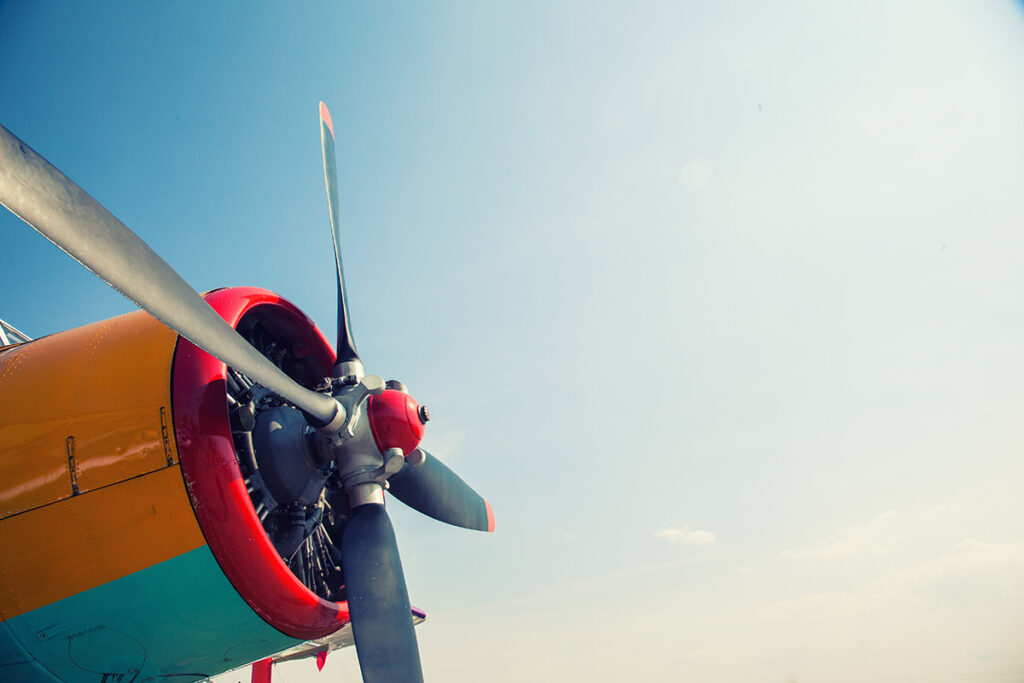
Another vital part of the airplane that helps it move forward is the propeller. It converts the rotational energy to thrust to push the aircraft in the right direction, using fluid dynamics principles to overcome air drag or resistance.
In most cases, propellers have at least two blades attached to a central hub, carefully shaped and placed to ensure the plane gets balanced propulsion. The length and angle are tailored to meet production’s requirements regarding noise and airflow, coming in different setups depending on the models and types of flights.
6. Tail/Empennage

Also known as the tail/tail assembly, the empennage is located at the rear and keeps the plane stable during flight.
People often compare the empennage to the feathers of an arrow since both help with overall control and stability. In fact, the word “empennage” comes from French (from the word “empenner”) and translates to “feathering an arrow.”
Various parts of this assembly play a vital role to its aerodynamic forces:
- A vertical stabilizer, standing vertically at the back of the plane (hence the name), prevents the aircraft from rotating or twisting its nose too much during flight — a phenomenon known as adverse yaw.
- Connected to this vertical stabilizer is a rudder pedal, which pilots can move to control the plane’s yaw and directional changes.
- An elevator (at the back edge of a horizontal stabilizer) controls the plane’s pitch. Pilots can adjust the plane’s nose-down or nose-up position to affect the descent or climb.
- Its horizontal stabilizer is just as important. This device prevents the plane from pitching up and down too much and works with the elevator to provide more balance during altitude changes and level flight.
Sometimes, the tail assembly includes static wicks — small, pointy devices installed on its trailing edges. These wicks disperse static electricity as the plane moves forward, reducing the risks of electric interference with important navigation and communication systems.
7. Landing Gear
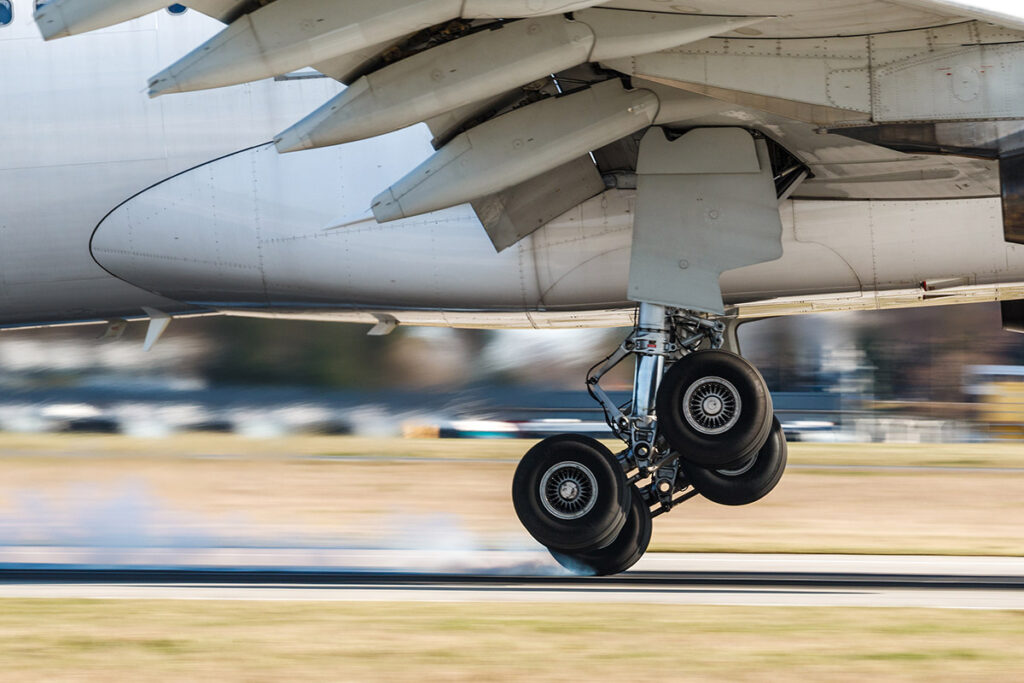
Last but not least, landing gears are the “legs” crucial for landing and takeoff operations.
Their job is to provide support whenever the plane is on the ground, spreading out its weight evenly to ensure stability and prevent any structural damage. Most landing gears also include wheels so the plane can operate smoothly on regular runways.
Basic Instruments and Indicators For Aircraft Safety
- Airspeed indicator: The plane’s speed compared to the air surrounding it
- Attitude indicator: The plane’s altitude (is it level with the horizon or tilted up/down?)
- Altimeter: The plane’s altitude (but this time compared to the sea level), mostly for descents
- Turn coordinator: The turn rate (compared to the gravity pull)
Conclusion
These aircraft components seem complicated at first glance. But once you relate them to how our own bodies function, they will start to make sense! Feel free to reach out if you need more guidance on other key elements.
See more: What Does VOR Stand For In Aviation?

